H-2A Program Use Continues to Rise
TOPICS
Labor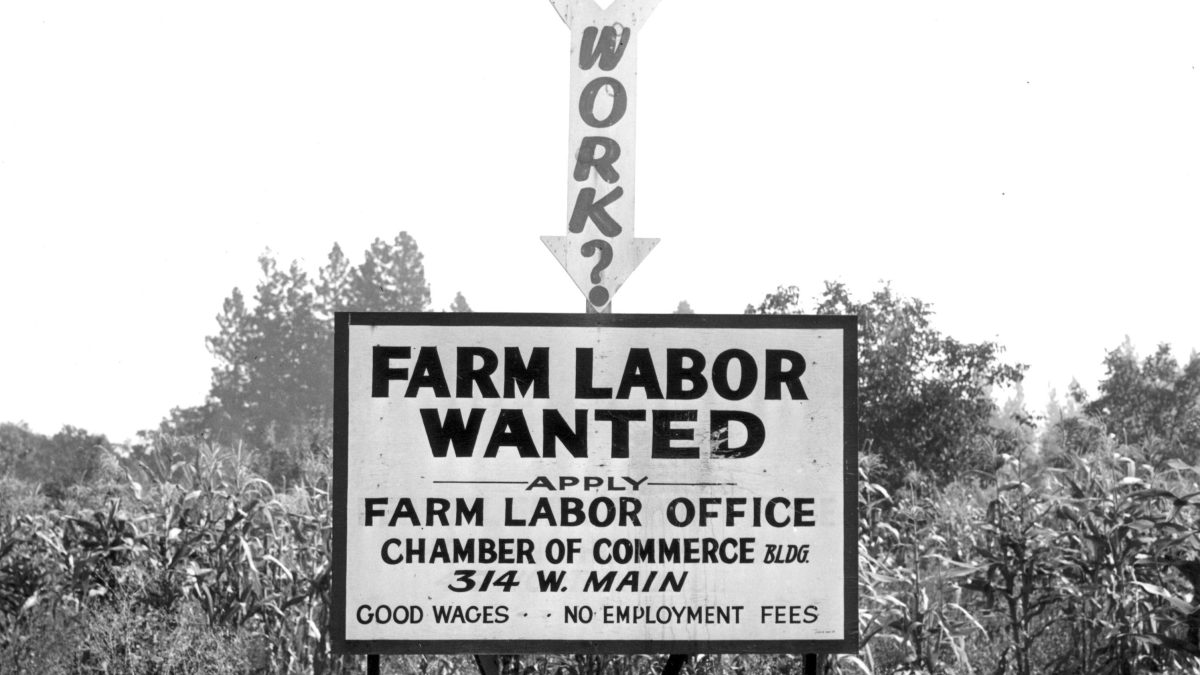
photo credit: OSU Special Collections & Archives/Commons
Veronica Nigh
Former AFBF Senior Economist
U.S. agricultural groups, American Farm Bureau Federation included, have for decades drawn attention to a growing labor challenge in our industry. The H-2A visa program, which went into effect 25 years ago, was intended to be a part of the solution to solving employers’ labor needs. New data released by the Labor Department on Friday, reveals that the demand for labor is stronger than ever.
Background
The Immigration and Nationality Act of 1952 introduced a temporary unskilled worker category, the H-2 category for foreign agricultural and non-agricultural workers who were coming to the U.S. to perform temporary work. The Immigration Reform and Control Act of 1986 subdivided this category into two subcategories: the H-2A (an uncapped category for temporary agricultural workers) and H-2B (a capped category for non-agricultural fields). After the law was signed into effect, several years passed during which time regulations were written and an eligible countries list was established. Finally, in 1992 first-year visas were issued and the program began in earnest. Changes to those regulations have been made over the years, but for the most part this is the same program that is in effect today.
Use
In the early years after the H-2 category was split, visas issued under the H-2B program significantly surpassed the H-2A program. In fact, this was the case in all of the first 17 years of the programs except one. However, in 2009, visas issued under the H-2A program exceeded the H-2B program, and have never looked back. Data from the State Department’s Bureau of Consular Affairs in figure 1 highlight the number of visas issued under both programs.
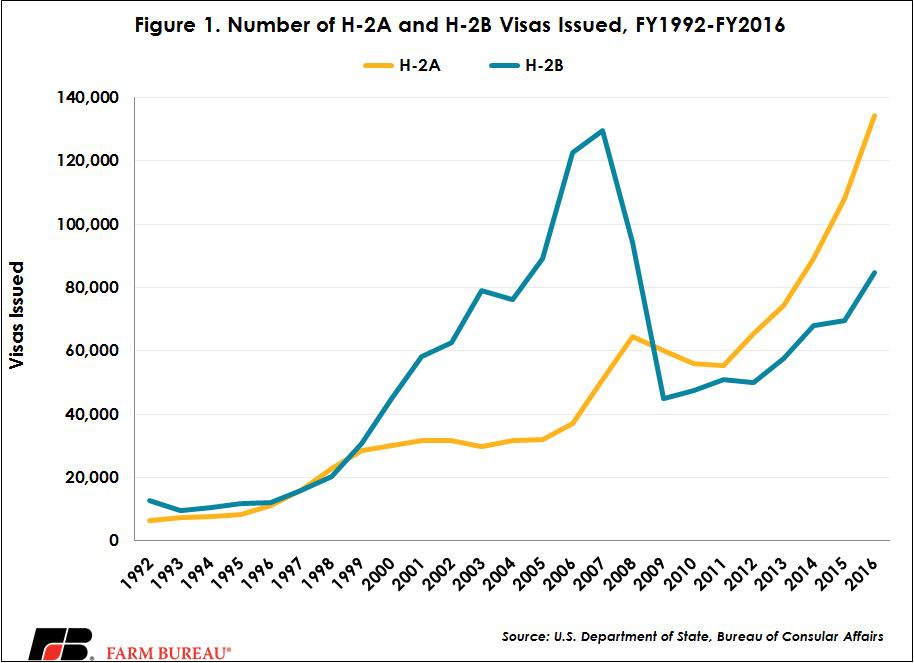
Fiscal Years 2012-2017
From figure 1 it is clear that usage of the H-2A program began to change markedly in 2012. Unable to find labor for the planting, care and harvesting of seasonal crops, farmers began turning to the H-2A program as a solution, despite well-documented complaints about the program that this article will not discuss. In fact, double-digit growth in the number of visas issued has been experienced in each of the last six years.
News reports from the last growing season seemed to suggest that the labor market grew even tighter in 2017. On Friday, the Labor Department released the final quarter of data for fiscal year 2017 and seemed to provide evidence that the farm labor tightness was real. DOL’s data revealed that in FY 2017, DOL certified more than 200,000 H-2A positions, a first for the program. This constitutes a 21 percent increase over FY 2016 and a 103 percent increase over 2013. In other words, the number of positions certified by DOL more than doubled over the last five years.
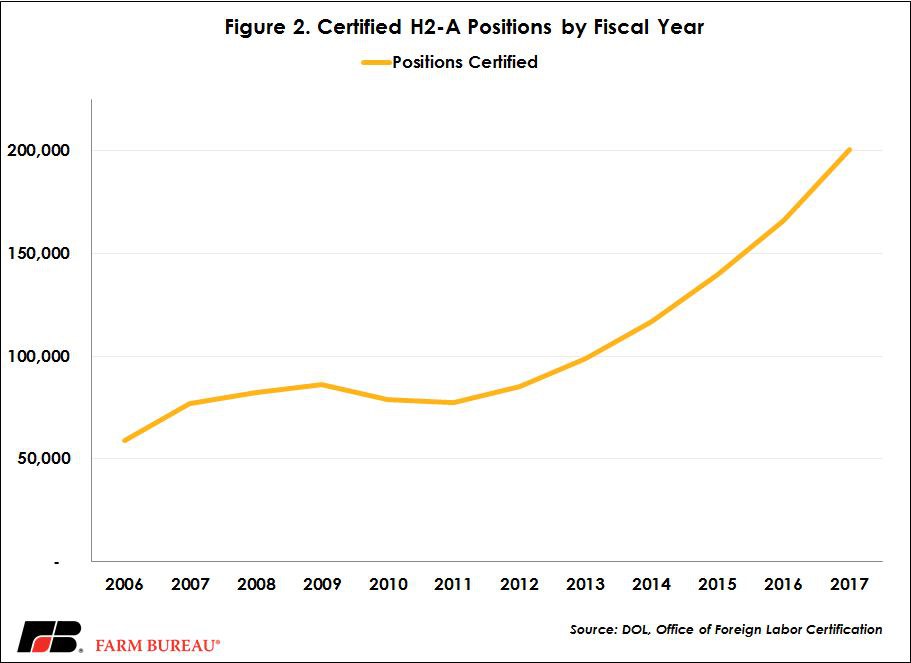
Top States
Florida, Georgia, North Carolina, Washington and California, in that order, had the largest number of certified H-2A positions in FY2017. This group of five states has been the top users of the program the last three years and was responsible for more than 50 percent of all H-2A certified positions during the last two years, as highlighted in figure 3.
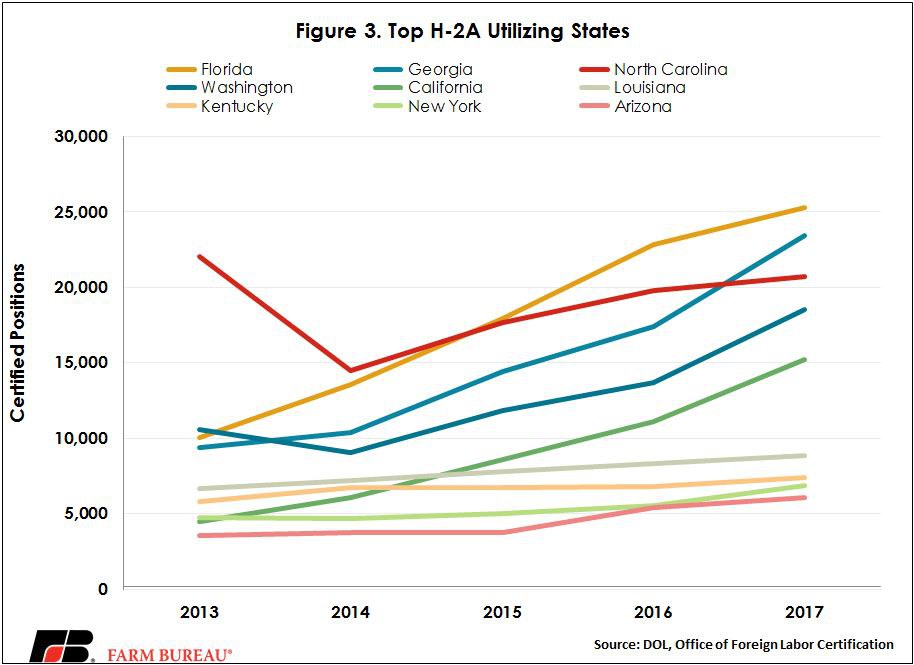
Top Crops
The detailed H-2A process requires applicants to specify the crop for which they are requesting workers; however, DOL did not begin releasing data related to top crops until 2015. While three years is a short period of time to draw strong conclusions, the data suggest the beginning of an interesting trend. Berries, tobacco and apples have consistently been top crops in the H-2A program, but usage of the program by berry and apple growers has been impressive. Certified positions related to berries in FY2017 were up 43 percent from FY 2016 and up 75 percent compared to FY 2015. Certified positions related to apples in FY 2017 were up 30 percent from FY 2016 and up 69 percent compared to FY 2015.
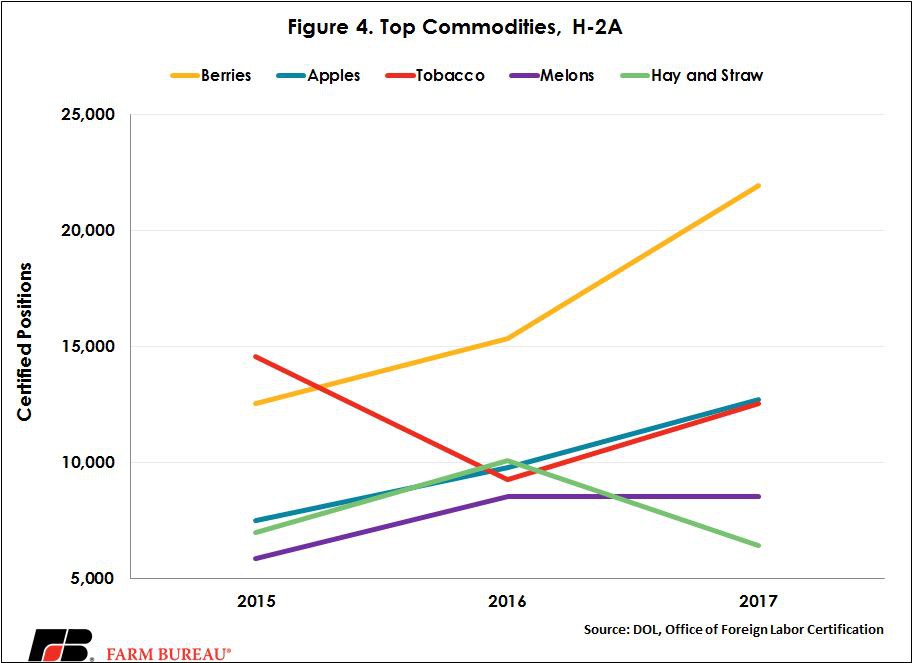
The H-2A program has been the source of policy discussion since its inception. The Congressional Research Service completed an excellent report on the H-2A and H-2B visa programs in May 2017, after requests from policymakers, amid assertion that the H-2A and H-2B visa programs do not adequately meet employers’ labor needs. Case in point, a recently released informal survey by the California Farm Bureau showed that that more than half of responding farmers had experienced employee shortages during the past year. The ever increasing need for farm labor and rising H-2A program use suggests that we should expect the volume on this discussion to continue to rise.
Top Issues
VIEW ALL